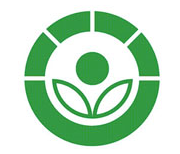Irradiation, which has been used to treat food since the late 1950s, provides processors with an alternative to chemical and heat treatments.
Research has shown that food irradiation is safe and effective. The process has been examined thoroughly by the World Health Organization; the United Nations Food and Agriculture Organization; the European Community Scientific Committee for Food; the United States Food and Drug Administration, a United Kingdom House of Lords committee and by scientists at FSANZ.
How are foods permitted to be irradiated?
FSANZ must give permission before a food can be irradiated. FSANZ assessments consider:
1.the technological need for the treatment
2.the safety of the treatment
3.effects on food composition
4.any effects on the nutritional quality of the food.
FSANZ does not allow irradiation to be used to clean up food that is unsafe or unsuitable for human consumption.
How is food irradiated?
The food is exposed to ionising radiation, either from gamma rays or a high-energy electron beam or powerful x-rays.
Gamma rays and x-rays are a form of radiation that share some characteristics with microwaves, but with much higher energy and penetration.
The rays pass through the food just like microwaves in a microwave oven, but the food does not heat up to any significant extent. Electron beams and x-rays are produced using electricity, which can be switched on or off, and they do not require radioactive material.
In both cases, organisms that are responsible for spoiling foods, such as insects, moulds and bacteria can be killed.
Radiation is measured in kilograys (kGy). Technology allows for a precise dose to be measured. The doses permitted range from a maximum of 1 kilogray (kGy) for tropical fruits; persimmons, tomatoes and capsicums, and up to 30 kGy for herbs and spices.
Is irradiated food radioactive?
No. During irradiation the food never comes into contact with the radioactive source and there are upper limits in place on the energy levels that may be used for treating foods. Therefore, the radioactive sources permitted do not generate gamma, electrons or x-rays of sufficient high energy to make food radioactive. No radioactive energy remains in the food after treatment.
What foods are irradiated?
In Australia and New Zealand, herbs and spices, herbal infusions, and some fruits and vegetables can be irradiated.
FSANZ has established that there is a technological need to irradiate these foods, and that there are no safety concerns or significant loss of nutrients when irradiating these foods.
How can I tell if food has been irradiated?
A food that has been irradiated, or food that contains irradiated ingredients or components, must be labelled with a statement that the food, ingredients or components have been treated with ionising radiation.
If the food is not normally required to be labelled, then the mandatory labelling statement must be displayed close to the food. This would apply to foods such as:
whole fruit and vegetables sold loose by supermarkets
a take away pizza with an irradiated herb as an ingredient.
The radura symbol (below) may be used in addition to the mandatory labelling.






